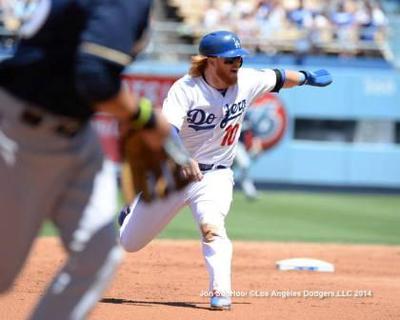obstruction, interference or no call
by Brian G.
(McMinnville Oregon)

Brian asked: Based loaded, no outs.
Batter hits ball to LF, base hit. As the runner on second is heading to third, he and the SS collide.
The ball was not in play to the SS and he was not attempting a play on the ball. The ball was still in the outfield, yet to be recovered by the LF.
There was no intentional part of either player to collide, they merely occupied the same spot at the same time.
Obstruction, interference, no call?
Rick answered: Brian, thank you for your question.
Rule 2.0 Obstruction is the act of a fielder who, while not in possession of the ball and not in the act of fielding the ball, impedes the progress of any runner.
Rule 2.0 (Obstruction) Comment: If a fielder is about to receive a thrown ball and if the ball is in flight directly toward and near enough to the fielder, so he must occupy his position to receive the ball he may be considered "in the act of fielding a ball."
It is entirely up to the judgment of the umpire as to whether a fielder is in the act of fielding a ball.
After a fielder has made an attempt to field a ball and missed, he can no longer be "in the act of fielding the ball."
Rule 7.06 (b) If no play is being made on the obstructed runner, the play shall proceed until no further action is possible. The umpire shall then call "time" and impose such penalties, if any, as in his judgment will nullify the act of obstruction.
(b) Comment: Under 7.06 (b) when the ball is not dead on obstruction and an obstructed runner advances beyond the base which, in the umpire's judgment, he would have been awarded because of being obstructed, he does so at his own peril and may be tagged out. This is a judgment call.
In your situation, it makes no difference that there was no intent on either the runner or the fielders part.
The umpire should have let the play run it's course, called time and awarded the obstructed runner the number of bases he felt he would have reached.
Since the obstructed runner was on second, the most the umpire could award was 2.
If he felt the runner should only receive one base awarded, and the runner attempted to score and was thrown out, he was on his own at that point.
I am guessing, in real time, this situation became pretty exciting. What was the actual call on the field at the time?
Yours in baseball,
Rick
|





